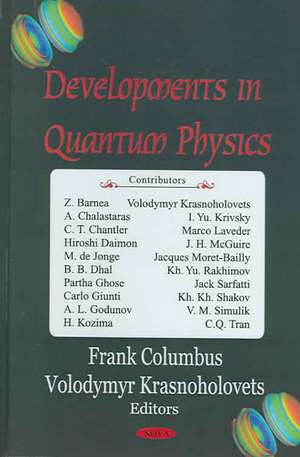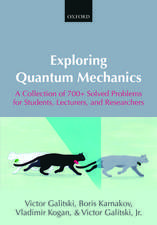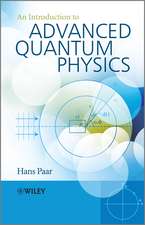Developments in Quantum Physics
Editat de Frank Columbus, Volodymyr Krasnoholovetsen Limba Engleză Hardback – 31 mai 2004
Preț: 943.55 lei
Preț vechi: 1288.06 lei
-27% Nou
Puncte Express: 1415
Preț estimativ în valută:
180.55€ • 188.89$ • 149.98£
180.55€ • 188.89$ • 149.98£
Carte disponibilă
Livrare economică 12-26 martie
Preluare comenzi: 021 569.72.76
Specificații
ISBN-13: 9781594540035
ISBN-10: 1594540039
Pagini: 280
Ilustrații: colour charts
Dimensiuni: 182 x 265 x 23 mm
Greutate: 0.77 kg
Editura: Nova Science Publishers Inc
ISBN-10: 1594540039
Pagini: 280
Ilustrații: colour charts
Dimensiuni: 182 x 265 x 23 mm
Greutate: 0.77 kg
Editura: Nova Science Publishers Inc
Cuprins
CONTENTS: Preface; Merging Quantum Theory Into Classical Physics (Jacques Moret-Bailly, Université de Bourgogne, France); The Quantum-Classical Interface, Bohmian Theory and Quantum Mechanics (Partha Ghose, S.N. Bose National Centre for Basic Sciences, India); Wheeler's World: It From Bit? (Jack Sarfatti, Internet Science Education Project); On the Origin of Conceptual Difficulties of Quantum Mechanics (Volodymyr Krasnoholovets, National Academy of Sciences, Ukraine); Quantum Time Ordering and Degeneracy (J. H. McGuire, Kh. Kh. Shakov and A. Chalastaras, Tulane University; A. L. Godunov, Old Dominion University; Kh. Yu. Rakhimov, Uzbekistan Academy of Sciences); The Maxwell Equations with Gradient-Type Sources, Their Applications and Quantisation (V. M. Simulik and I. Yu. Krivsky, Ukranian National Academy of Sciences); Quantum Physics of the Cold Fusion Phenomenon (H. Kozima, Portland State University); Neutrino Mixing (Carlo Giunti, Universitá di Torino, Italy; Marco Laveder, Universitá di Padova, Italy); Quantitative Determination of the Effect of the Harmonic Component in Monochromatised Synchrotron X-Ray Beam Experiments (C. Q. Tran, M. de Jonge, Z. Barnea, B. B. Dhal, C. T. Chantler, University of Melbourne, Australia); Orbital Angular Momentum of Photoelectrons Excited by Circularly-Polarized Light --- Rotation of Forward Scattering Peaks in Photoelectron Diffraction Pattern (Hiroshi Daimon, Nara Institute of Science and Technology (NAIST), Japan); Index.












